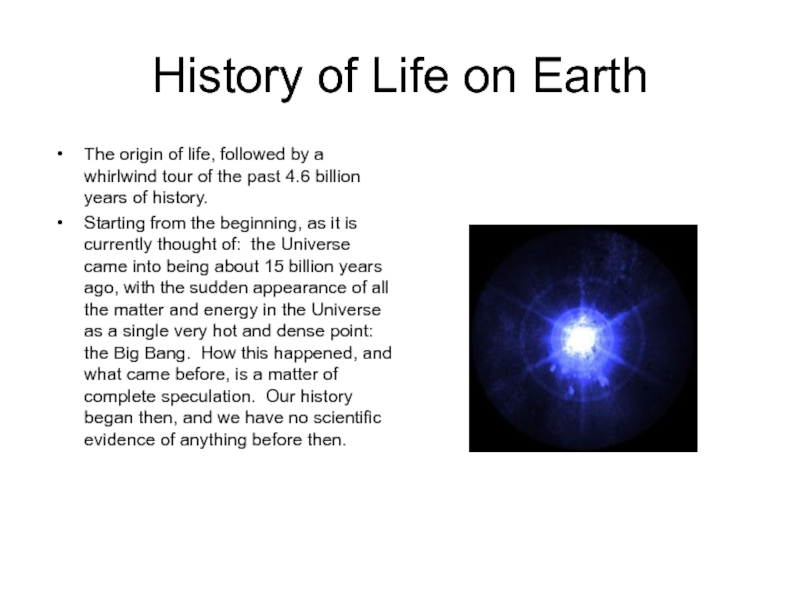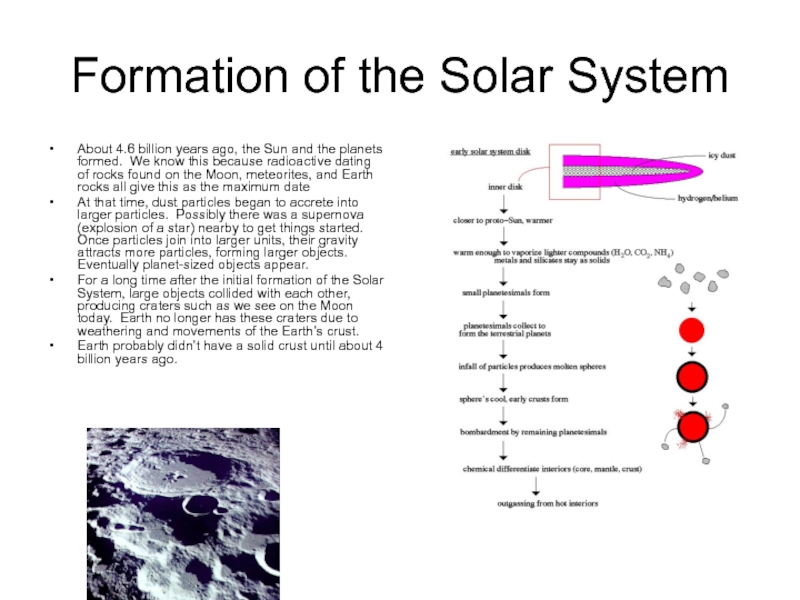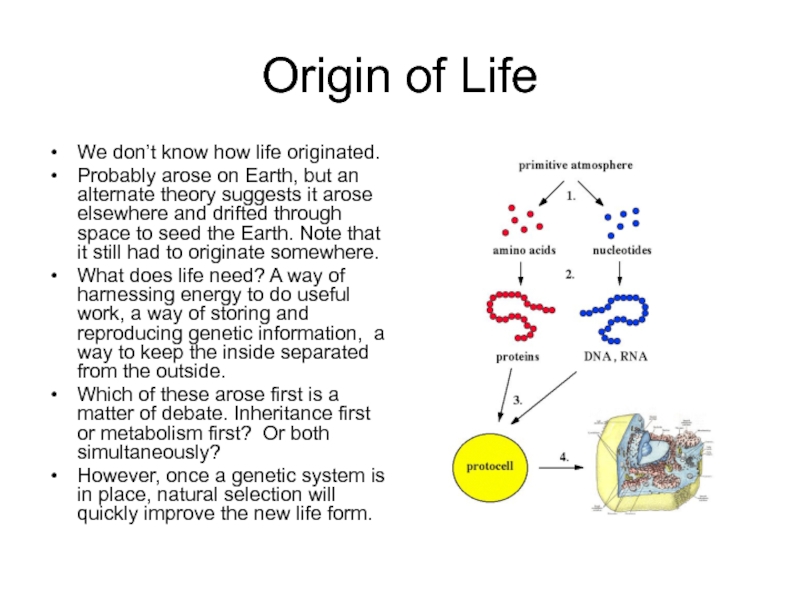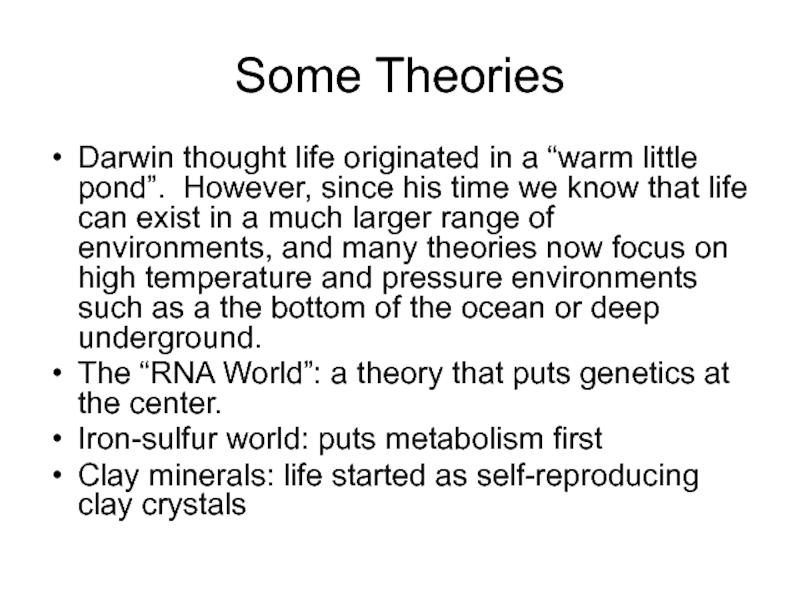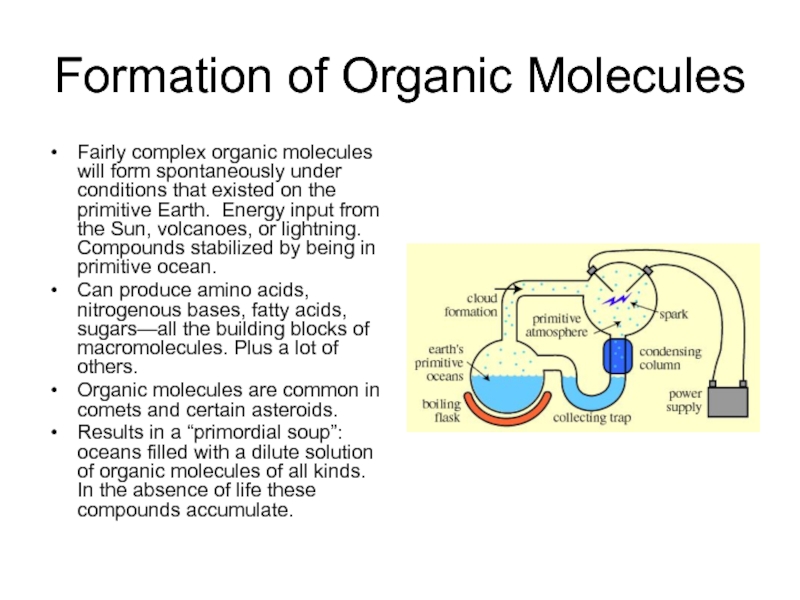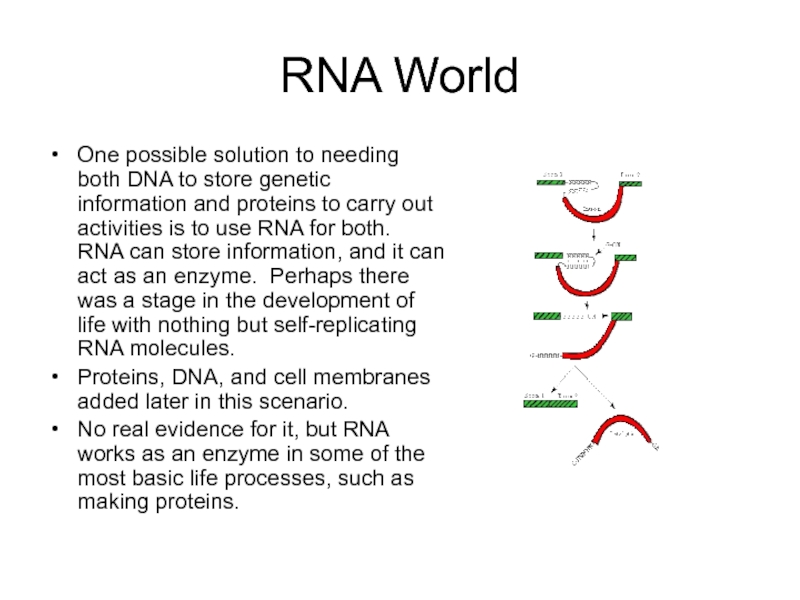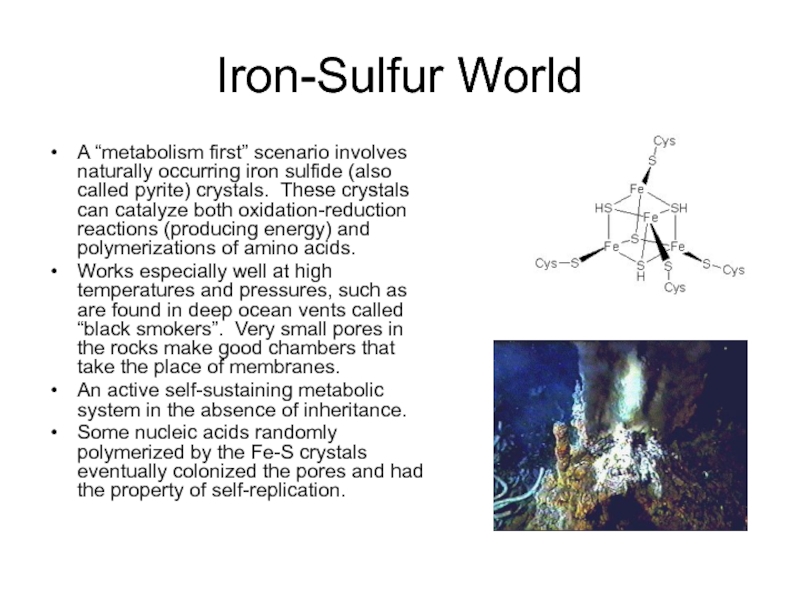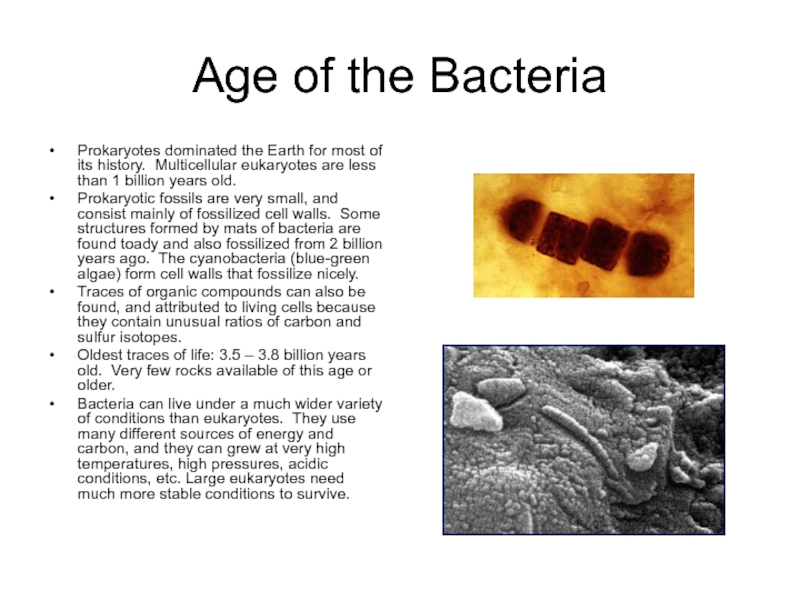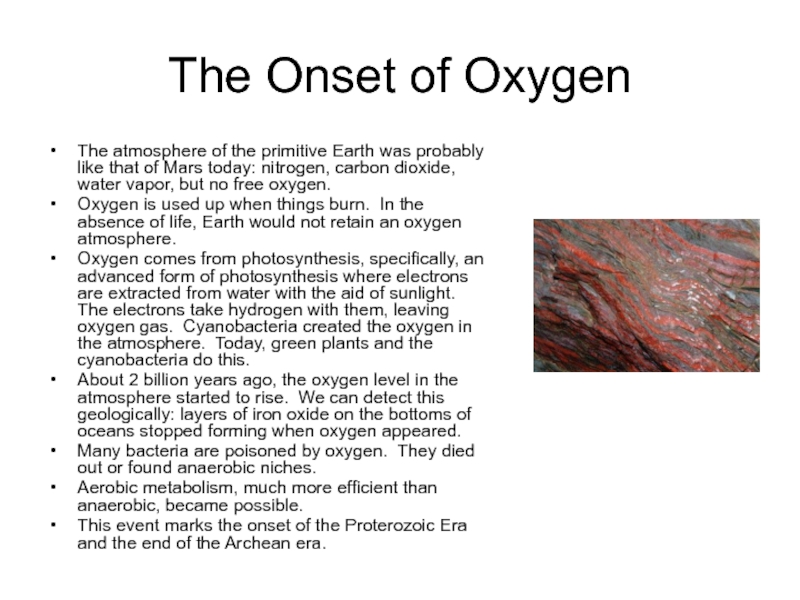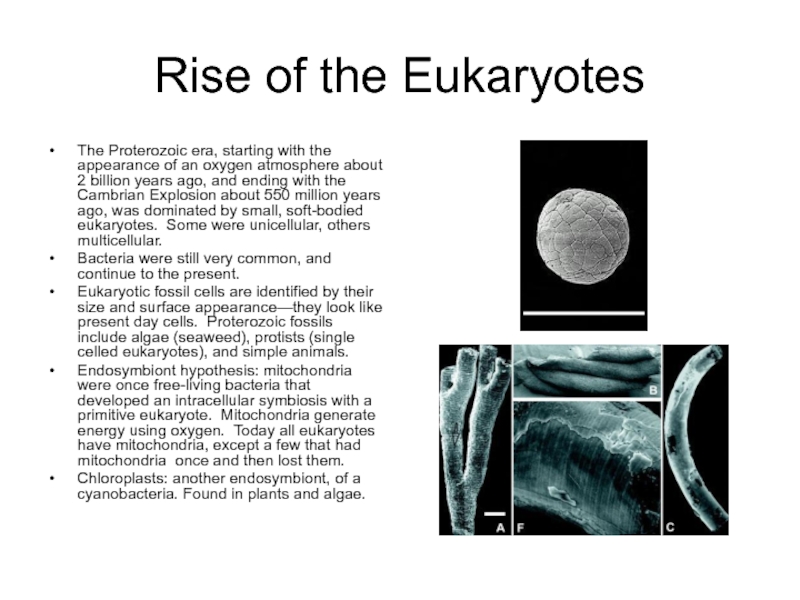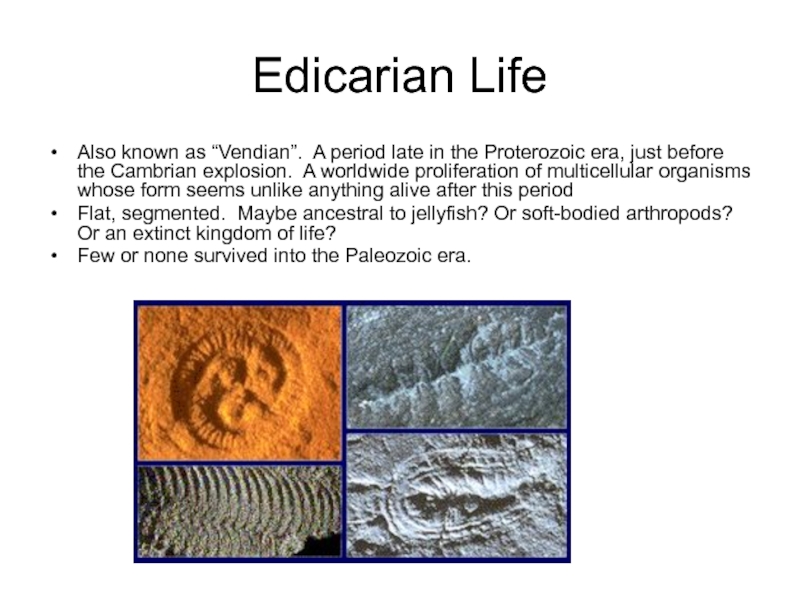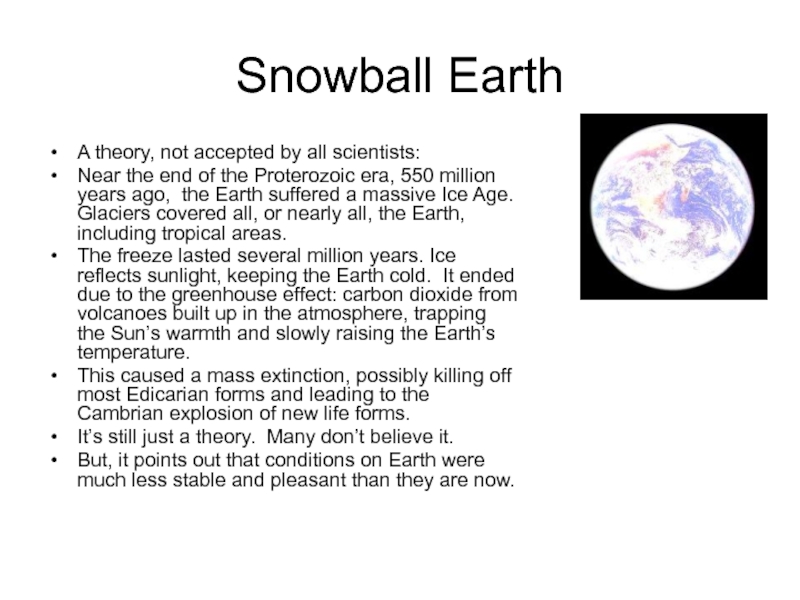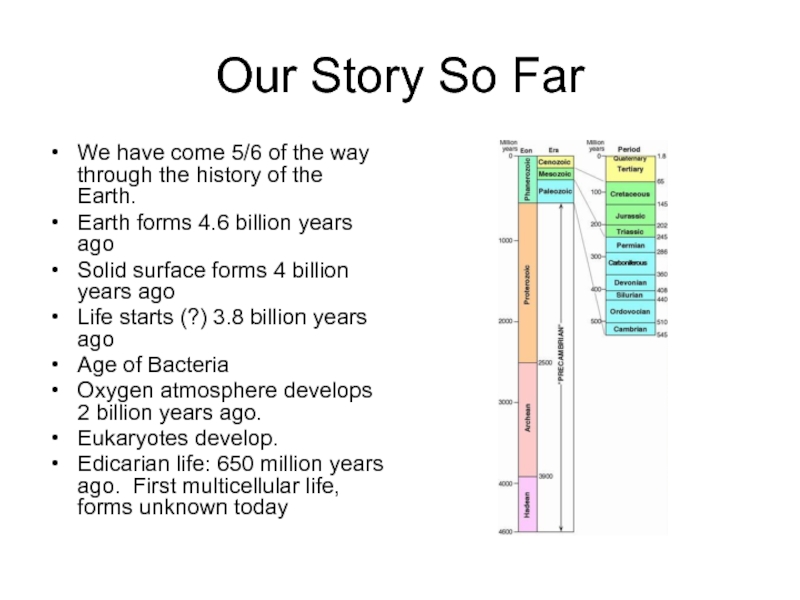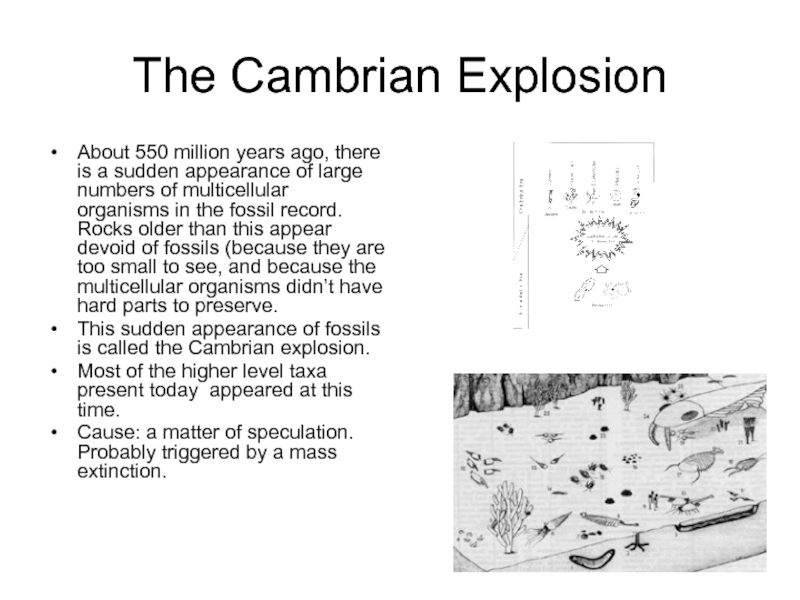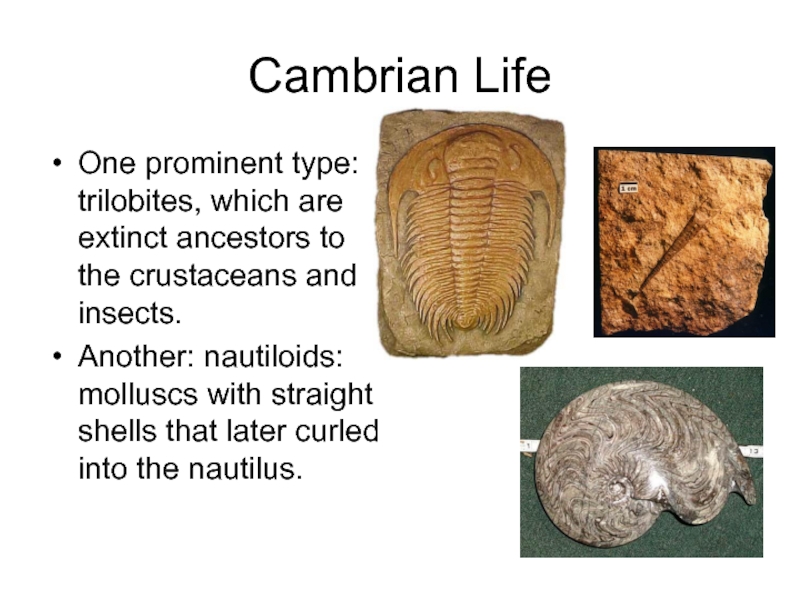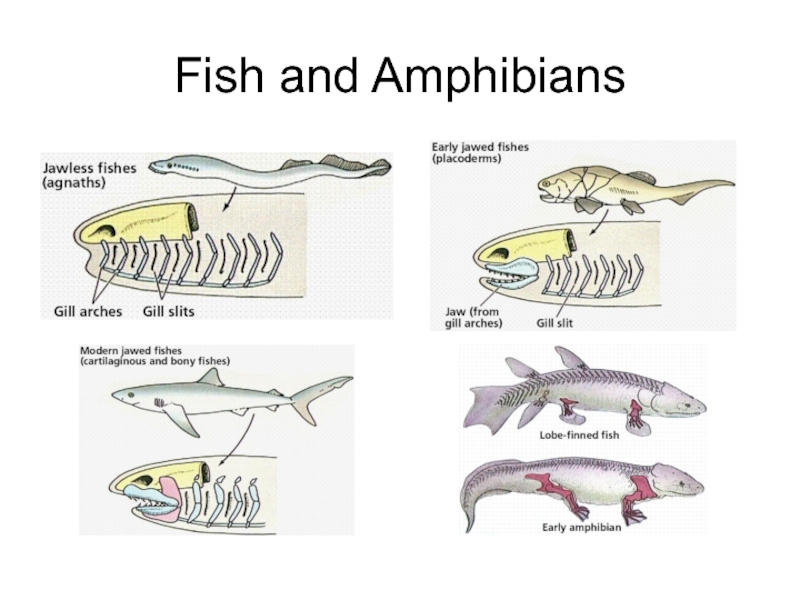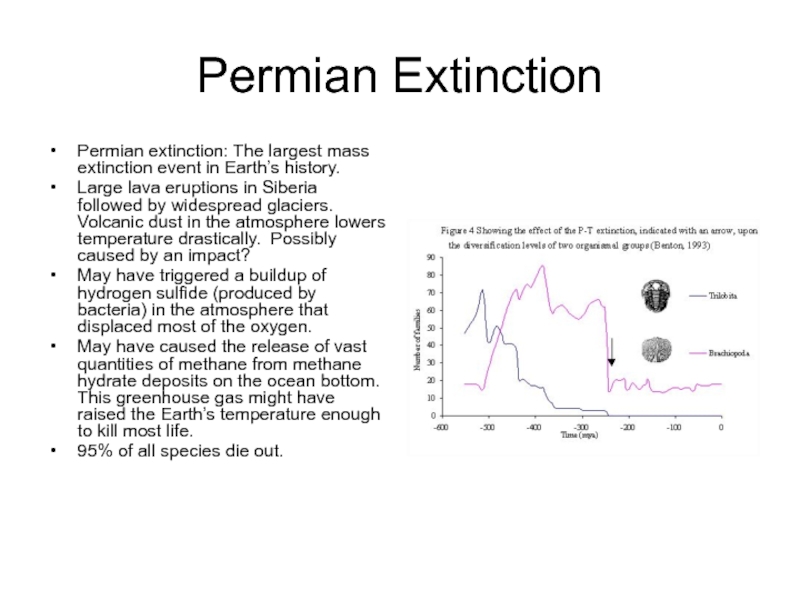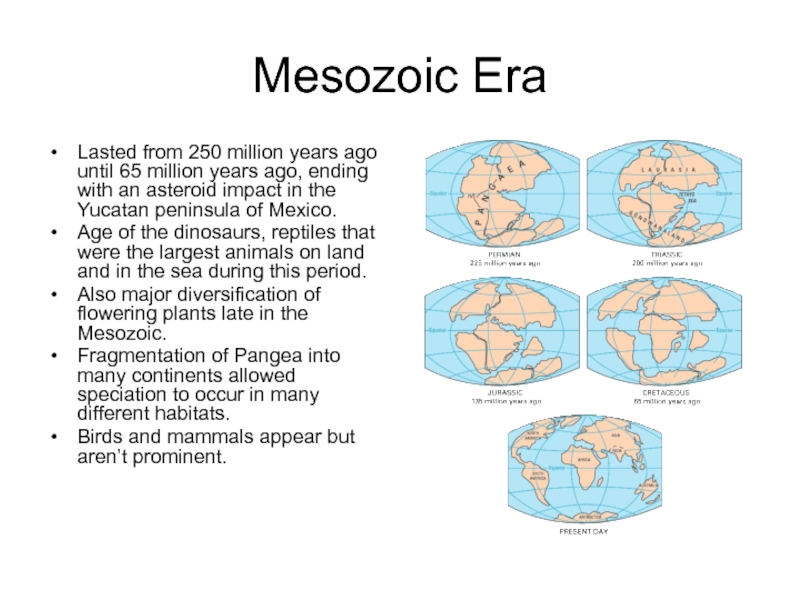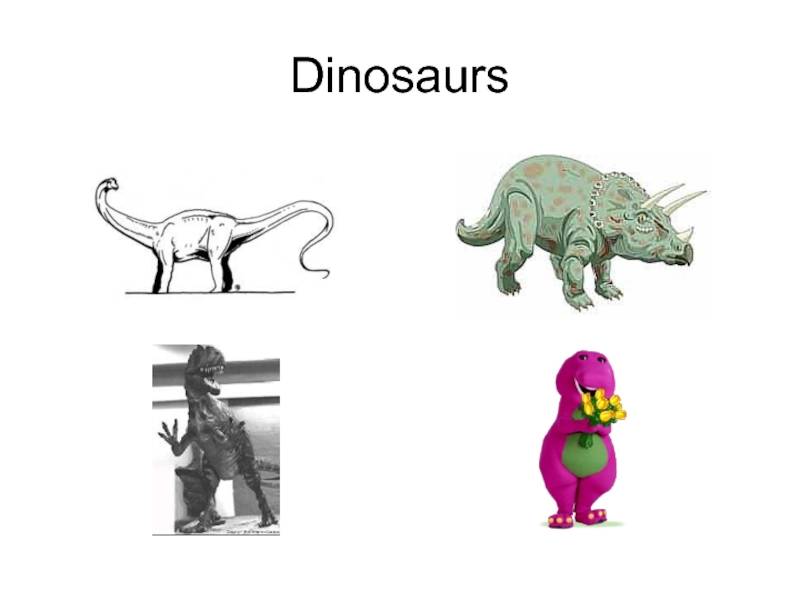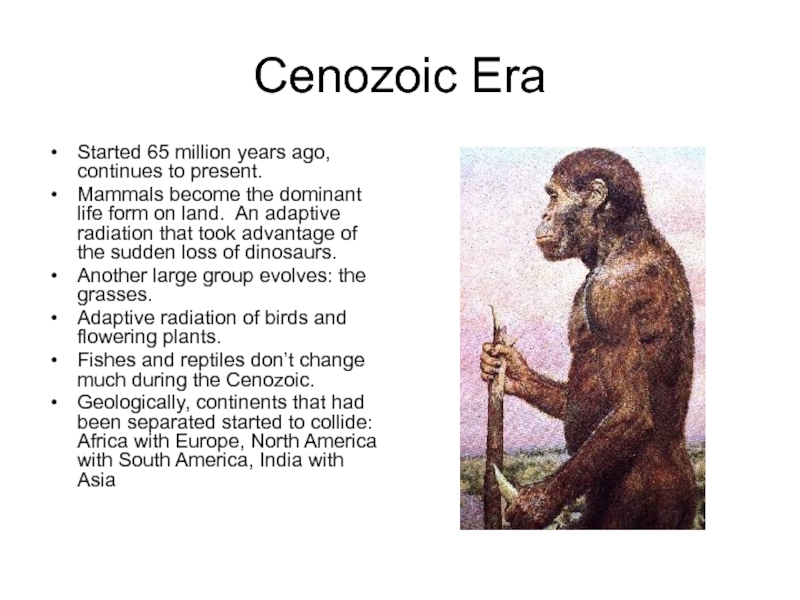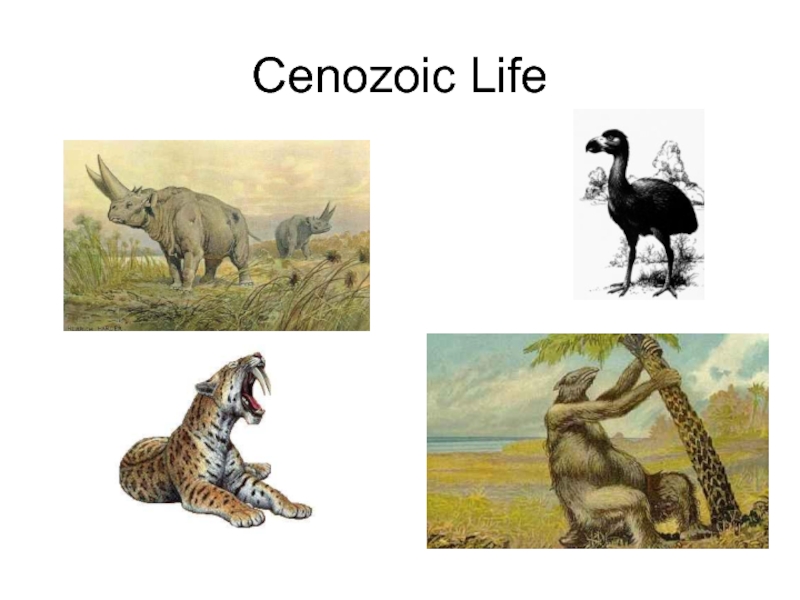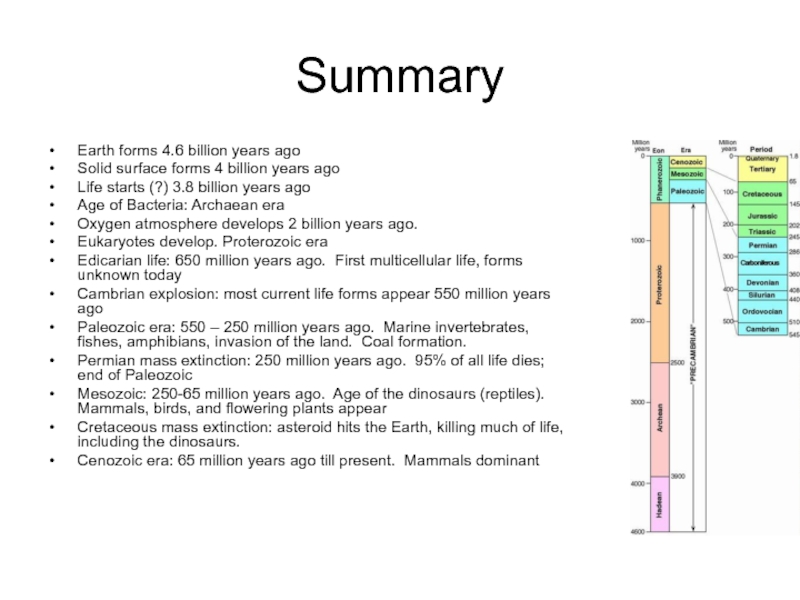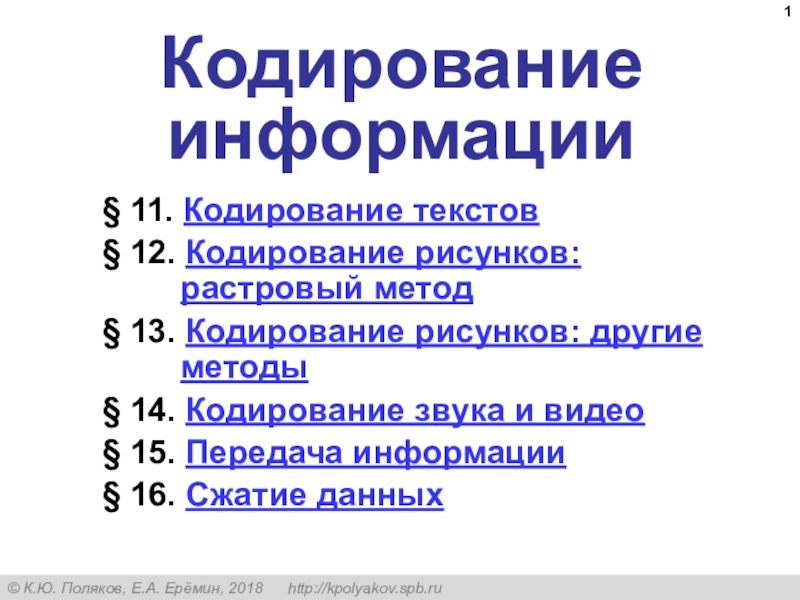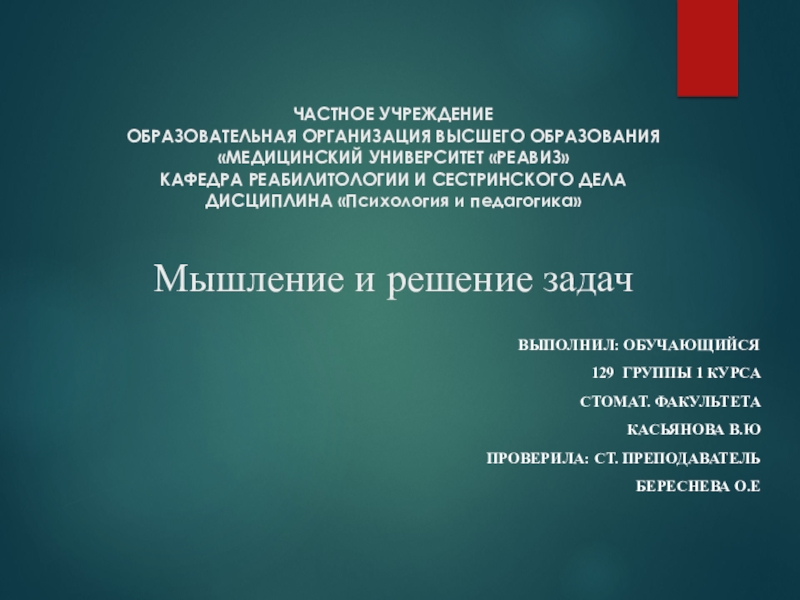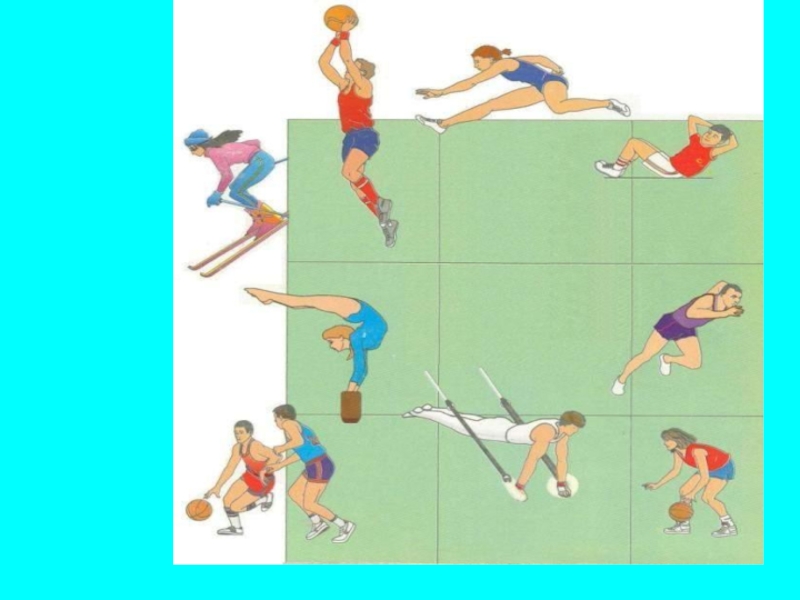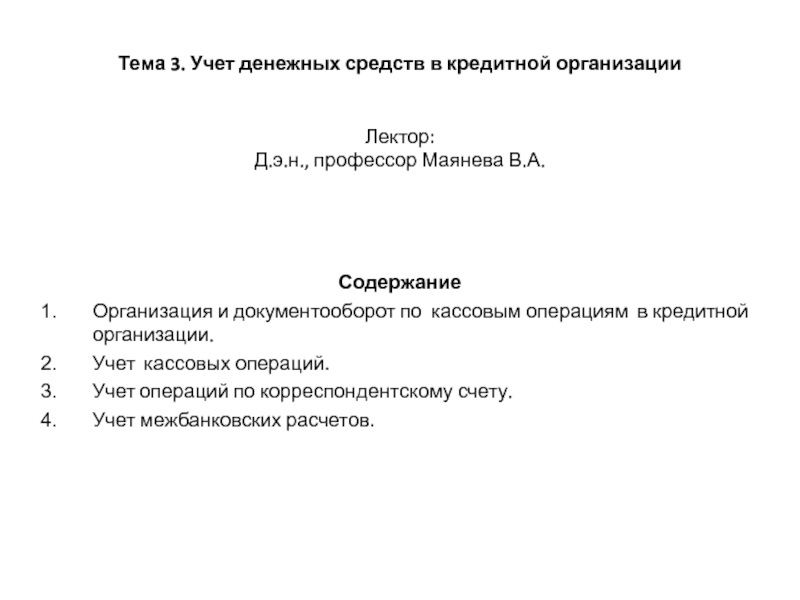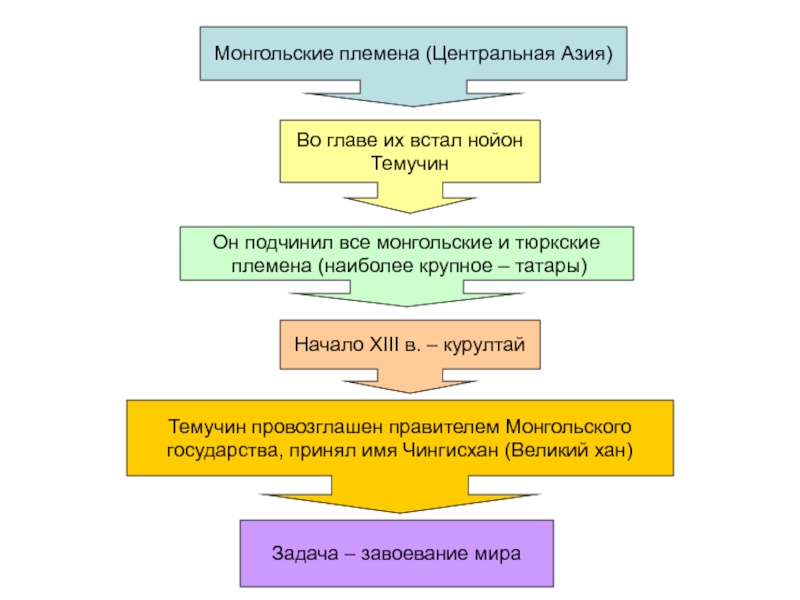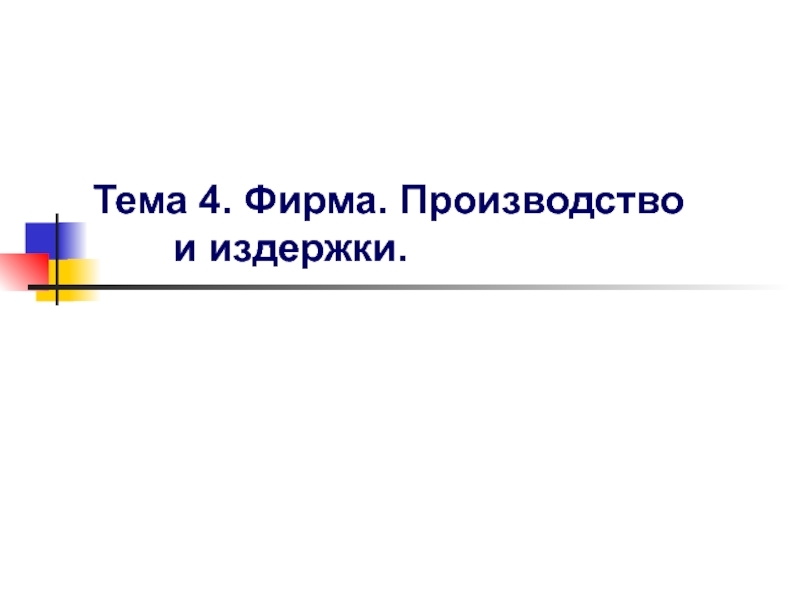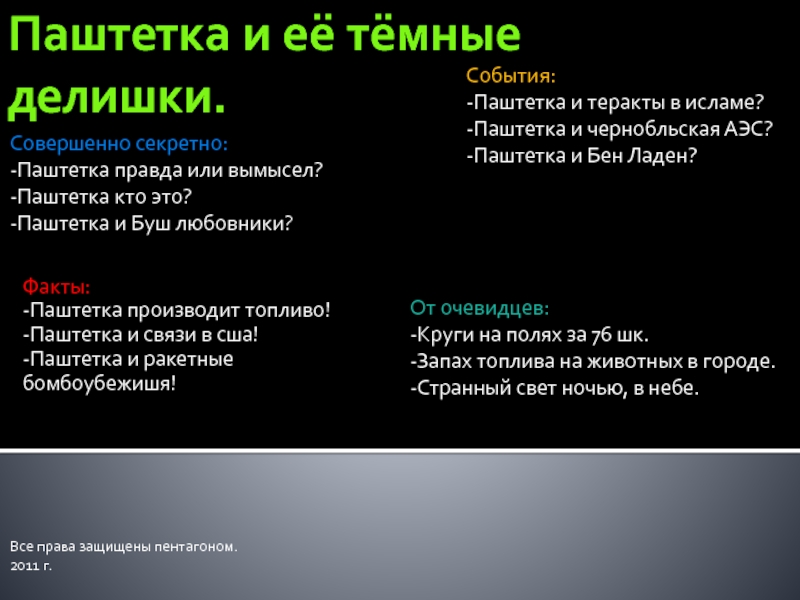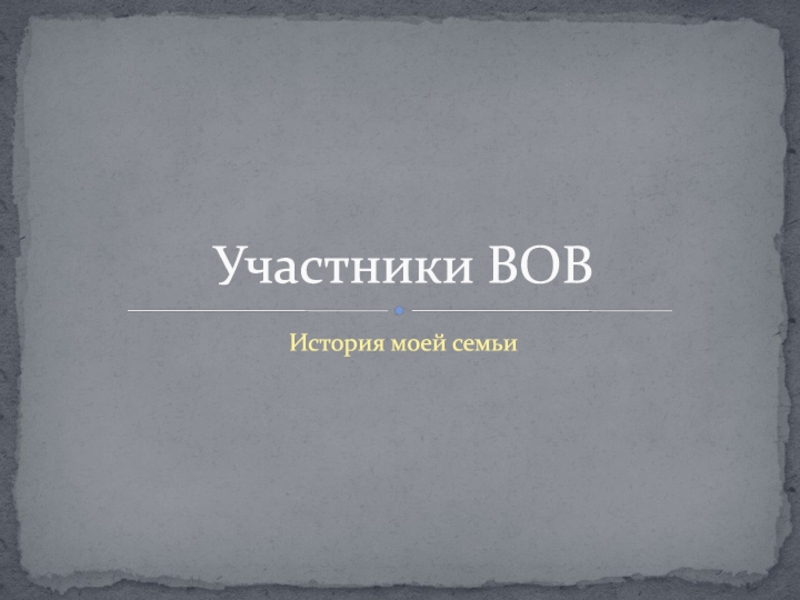Слайд 1History of Life on Earth
The origin of life, followed by
a whirlwind tour of the past 4.6 billion years of
history.
Starting from the beginning, as it is currently thought of: the Universe came into being about 15 billion years ago, with the sudden appearance of all the matter and energy in the Universe as a single very hot and dense point: the Big Bang. How this happened, and what came before, is a matter of complete speculation. Our history began then, and we have no scientific evidence of anything before then.
Слайд 2Formation of the Solar System
About 4.6 billion years ago, the
Sun and the planets formed. We know this because radioactive
dating of rocks found on the Moon, meteorites, and Earth rocks all give this as the maximum date
At that time, dust particles began to accrete into larger particles. Possibly there was a supernova (explosion of a star) nearby to get things started. Once particles join into larger units, their gravity attracts more particles, forming larger objects. Eventually planet-sized objects appear.
For a long time after the initial formation of the Solar System, large objects collided with each other, producing craters such as we see on the Moon today. Earth no longer has these craters due to weathering and movements of the Earth’s crust.
Earth probably didn’t have a solid crust until about 4 billion years ago.
Слайд 3Geological Ages
We can divide the history of life on Earth
into six main stages:
Hadean Era: from the formation of the
Earth about 4.6 billion years ago until about 4 billion years ago. The Earth’s surface is constantly bombarded by large objects which repeatedly melt the whole surface, making life impossible.
Archean Era: from 4 to 2 billion years ago (very roughly). Origin of life, all life is single celled bacteria. No oxygen in the atmosphere.
Proterozoic Era. 2 billion until 550 million years ago. Oxygen appears in the atmosphere and builds to approximately the present level of 21%. Eukaryotes appear. No hard parts: bone, teeth, shells, so very few fossils.
the first three eras are collectively called the Pre-Cambrian era
Paleozoic Era. 550 to 250 million years ago. Fossils appear, complex multicellular organisms, invasion of the land by plants and animals.
Mesozoic Era. 250 to 65 million years ago. Appearance of mammals and flowering plants, but the land is dominated by dinosaurs (reptiles).
Cenozoic Era. 65 million years ago until present. Land dominated by mammals and flowering plants.
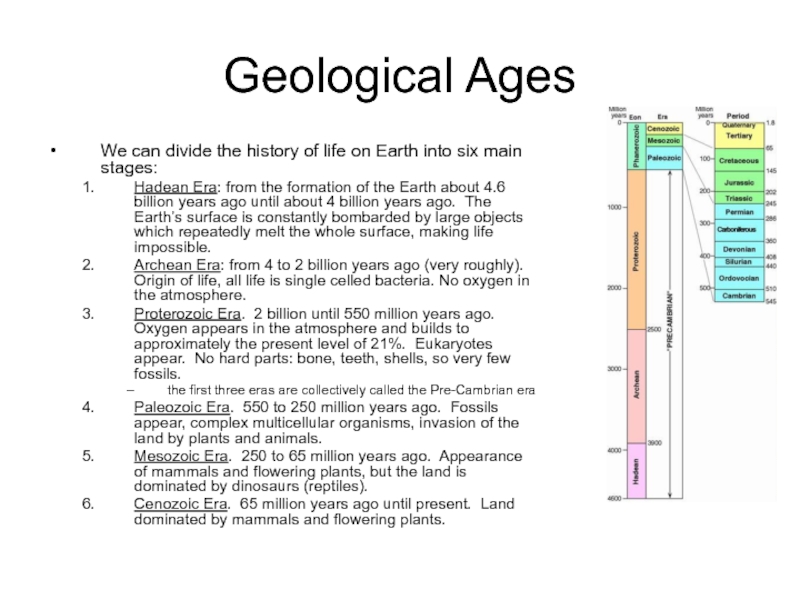
Слайд 4Origin of Life
We don’t know how life originated.
Probably arose on
Earth, but an alternate theory suggests it arose elsewhere and
drifted through space to seed the Earth. Note that it still had to originate somewhere.
What does life need? A way of harnessing energy to do useful work, a way of storing and reproducing genetic information, a way to keep the inside separated from the outside.
Which of these arose first is a matter of debate. Inheritance first or metabolism first? Or both simultaneously?
However, once a genetic system is in place, natural selection will quickly improve the new life form.
Слайд 5Some Theories
Darwin thought life originated in a “warm little pond”.
However, since his time we know that life can exist
in a much larger range of environments, and many theories now focus on high temperature and pressure environments such as a the bottom of the ocean or deep underground.
The “RNA World”: a theory that puts genetics at the center.
Iron-sulfur world: puts metabolism first
Clay minerals: life started as self-reproducing clay crystals
Слайд 6Formation of Organic Molecules
Fairly complex organic molecules will form spontaneously
under conditions that existed on the primitive Earth. Energy input
from the Sun, volcanoes, or lightning. Compounds stabilized by being in primitive ocean.
Can produce amino acids, nitrogenous bases, fatty acids, sugars—all the building blocks of macromolecules. Plus a lot of others.
Organic molecules are common in comets and certain asteroids.
Results in a “primordial soup”: oceans filled with a dilute solution of organic molecules of all kinds. In the absence of life these compounds accumulate.
Слайд 7RNA World
One possible solution to needing both DNA to store
genetic information and proteins to carry out activities is to
use RNA for both. RNA can store information, and it can act as an enzyme. Perhaps there was a stage in the development of life with nothing but self-replicating RNA molecules.
Proteins, DNA, and cell membranes added later in this scenario.
No real evidence for it, but RNA works as an enzyme in some of the most basic life processes, such as making proteins.
Слайд 8Iron-Sulfur World
A “metabolism first” scenario involves naturally occurring iron sulfide
(also called pyrite) crystals. These crystals can catalyze both oxidation-reduction
reactions (producing energy) and polymerizations of amino acids.
Works especially well at high temperatures and pressures, such as are found in deep ocean vents called “black smokers”. Very small pores in the rocks make good chambers that take the place of membranes.
An active self-sustaining metabolic system in the absence of inheritance.
Some nucleic acids randomly polymerized by the Fe-S crystals eventually colonized the pores and had the property of self-replication.
Слайд 9Age of the Bacteria
Prokaryotes dominated the Earth for most of
its history. Multicellular eukaryotes are less than 1 billion years
old.
Prokaryotic fossils are very small, and consist mainly of fossilized cell walls. Some structures formed by mats of bacteria are found toady and also fossilized from 2 billion years ago. The cyanobacteria (blue-green algae) form cell walls that fossilize nicely.
Traces of organic compounds can also be found, and attributed to living cells because they contain unusual ratios of carbon and sulfur isotopes.
Oldest traces of life: 3.5 – 3.8 billion years old. Very few rocks available of this age or older.
Bacteria can live under a much wider variety of conditions than eukaryotes. They use many different sources of energy and carbon, and they can grew at very high temperatures, high pressures, acidic conditions, etc. Large eukaryotes need much more stable conditions to survive.
Слайд 10The Onset of Oxygen
The atmosphere of the primitive Earth was
probably like that of Mars today: nitrogen, carbon dioxide, water
vapor, but no free oxygen.
Oxygen is used up when things burn. In the absence of life, Earth would not retain an oxygen atmosphere.
Oxygen comes from photosynthesis, specifically, an advanced form of photosynthesis where electrons are extracted from water with the aid of sunlight. The electrons take hydrogen with them, leaving oxygen gas. Cyanobacteria created the oxygen in the atmosphere. Today, green plants and the cyanobacteria do this.
About 2 billion years ago, the oxygen level in the atmosphere started to rise. We can detect this geologically: layers of iron oxide on the bottoms of oceans stopped forming when oxygen appeared.
Many bacteria are poisoned by oxygen. They died out or found anaerobic niches.
Aerobic metabolism, much more efficient than anaerobic, became possible.
This event marks the onset of the Proterozoic Era and the end of the Archean era.
Слайд 11Rise of the Eukaryotes
The Proterozoic era, starting with the appearance
of an oxygen atmosphere about 2 billion years ago, and
ending with the Cambrian Explosion about 550 million years ago, was dominated by small, soft-bodied eukaryotes. Some were unicellular, others multicellular.
Bacteria were still very common, and continue to the present.
Eukaryotic fossil cells are identified by their size and surface appearance—they look like present day cells. Proterozoic fossils include algae (seaweed), protists (single celled eukaryotes), and simple animals.
Endosymbiont hypothesis: mitochondria were once free-living bacteria that developed an intracellular symbiosis with a primitive eukaryote. Mitochondria generate energy using oxygen. Today all eukaryotes have mitochondria, except a few that had mitochondria once and then lost them.
Chloroplasts: another endosymbiont, of a cyanobacteria. Found in plants and algae.
Слайд 12Edicarian Life
Also known as “Vendian”. A period late in the
Proterozoic era, just before the Cambrian explosion. A worldwide proliferation
of multicellular organisms whose form seems unlike anything alive after this period
Flat, segmented. Maybe ancestral to jellyfish? Or soft-bodied arthropods? Or an extinct kingdom of life?
Few or none survived into the Paleozoic era.
Слайд 13Snowball Earth
A theory, not accepted by all scientists:
Near the end
of the Proterozoic era, 550 million years ago, the Earth
suffered a massive Ice Age. Glaciers covered all, or nearly all, the Earth, including tropical areas.
The freeze lasted several million years. Ice reflects sunlight, keeping the Earth cold. It ended due to the greenhouse effect: carbon dioxide from volcanoes built up in the atmosphere, trapping the Sun’s warmth and slowly raising the Earth’s temperature.
This caused a mass extinction, possibly killing off most Edicarian forms and leading to the Cambrian explosion of new life forms.
It’s still just a theory. Many don’t believe it.
But, it points out that conditions on Earth were much less stable and pleasant than they are now.
Слайд 14Our Story So Far
We have come 5/6 of the way
through the history of the Earth.
Earth forms 4.6 billion years
ago
Solid surface forms 4 billion years ago
Life starts (?) 3.8 billion years ago
Age of Bacteria
Oxygen atmosphere develops 2 billion years ago.
Eukaryotes develop.
Edicarian life: 650 million years ago. First multicellular life, forms unknown today
Слайд 15The Cambrian Explosion
About 550 million years ago, there is a
sudden appearance of large numbers of multicellular organisms in the
fossil record. Rocks older than this appear devoid of fossils (because they are too small to see, and because the multicellular organisms didn’t have hard parts to preserve.
This sudden appearance of fossils is called the Cambrian explosion.
Most of the higher level taxa present today appeared at this time.
Cause: a matter of speculation. Probably triggered by a mass extinction.
Слайд 16Cambrian Life
One prominent type: trilobites, which are extinct ancestors to
the crustaceans and insects.
Another: nautiloids: molluscs with straight shells that
later curled into the nautilus.
Слайд 17Paleozoic Era
The Paleozoic starts with the Cambrian explosion around 540
million years ago, and ends with the Permian Mass Extinction,
about 250 million years ago.
Most of Illinois is covered with sedimentary rock laid down during this period, when the area was covered by shallow seas.
Large amounts of swamp vegetation from this period were converted into coal after being buried and compressed.
Several mass extinctions mark boundaries of eras within the Paleozoic.
Early Paleozoic dominated by marine invertebrates.
Appearance and evolution of fish during the middle period of the Paleozoic. Jaws developed, then bones.
Major change in vertebrates: tetrapods (animals with 4 limbs) appear in the mid-Paleozoic. First as paired fins on fish, then later as legs.
Amphibians and reptiles appeared. Reptiles were not common until the next era, the Mesozoic.
Life evolved in the sea, but invaded the land during the late Paleozoic era. First plants (which needed to evolve the ability to stand upright and transport nutrients against gravity), then arthropods (insects, etc.) and vertebrates.
At the end of the Paleozoic, the continents were joined into a single land mass, Pangea.
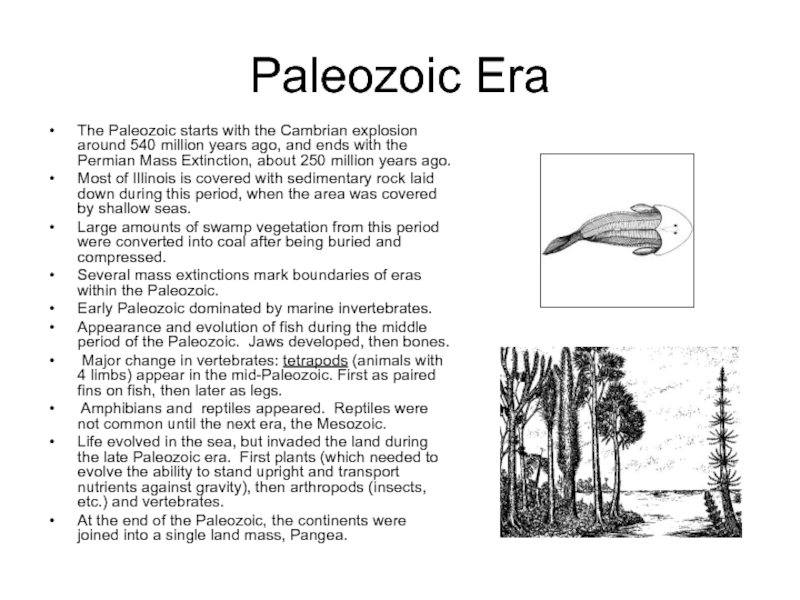
Слайд 19Permian Extinction
Permian extinction: The largest mass extinction event in Earth’s
history.
Large lava eruptions in Siberia followed by widespread glaciers. Volcanic
dust in the atmosphere lowers temperature drastically. Possibly caused by an impact?
May have triggered a buildup of hydrogen sulfide (produced by bacteria) in the atmosphere that displaced most of the oxygen.
May have caused the release of vast quantities of methane from methane hydrate deposits on the ocean bottom. This greenhouse gas might have raised the Earth’s temperature enough to kill most life.
95% of all species die out.
Слайд 20Mesozoic Era
Lasted from 250 million years ago until 65 million
years ago, ending with an asteroid impact in the Yucatan
peninsula of Mexico.
Age of the dinosaurs, reptiles that were the largest animals on land and in the sea during this period.
Also major diversification of flowering plants late in the Mesozoic.
Fragmentation of Pangea into many continents allowed speciation to occur in many different habitats.
Birds and mammals appear but aren’t prominent.
Слайд 22Extinction of the Dinosaurs
All dinosaurs are thought to have become
extinct 65 million years ago, when a large object collided
with the Earth. It left a crater in the Yucatan peninsula in Mexico, with an iridium-rich layer of ash and clay deposited over the entire world. The collision threw enough dust into the atmosphere to block sunlight for several years, leading to the collapse of food chains and the deaths of most large animals. Apparently no animal lager than about 50 pounds survived.
This theory was proposed by Berkeley physicist Luis Alvarez and his son Walter, in 1980, and it was once very controversial. Older theories had the dinosaurs dying of “genetic exhaustion” or climatic shift, or predation by mammals. The older theories were not very satisfying—lots of hand waving and no very clear explanation for the sudden disappearance.
The meteor theory has gained a lot by finding the iridium-rich clay layer everywhere on Earth that rocks of the proper age are exposed. Also, the Chixulub crater in Mexico is 100 miles in diameter and of the proper age.
The idea that dust blocks photosynthesis comes from volcanic eruptions, such as Krakatoa in 1883 and Tambora in 1815. The latter caused “the year without a summer”, 1816, in New England—frosts as late as July, and the growing season cut in half. The global average temperature dropped by about 5 degrees Fahrenheit.
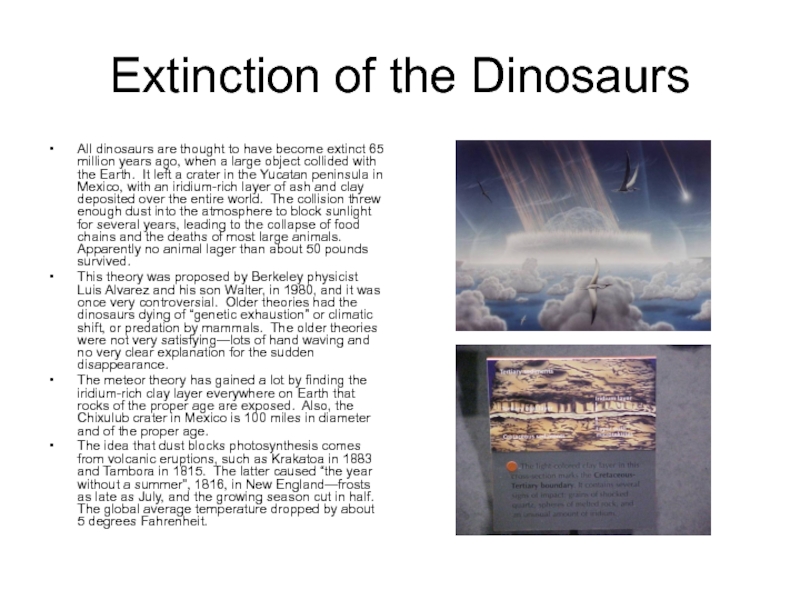
Слайд 23Cenozoic Era
Started 65 million years ago, continues to present.
Mammals become
the dominant life form on land. An adaptive radiation that
took advantage of the sudden loss of dinosaurs.
Another large group evolves: the grasses.
Adaptive radiation of birds and flowering plants.
Fishes and reptiles don’t change much during the Cenozoic.
Geologically, continents that had been separated started to collide: Africa with Europe, North America with South America, India with Asia
Слайд 25Summary
Earth forms 4.6 billion years ago
Solid surface forms 4 billion
years ago
Life starts (?) 3.8 billion years ago
Age of Bacteria:
Archaean era
Oxygen atmosphere develops 2 billion years ago.
Eukaryotes develop. Proterozoic era
Edicarian life: 650 million years ago. First multicellular life, forms unknown today
Cambrian explosion: most current life forms appear 550 million years ago
Paleozoic era: 550 – 250 million years ago. Marine invertebrates, fishes, amphibians, invasion of the land. Coal formation.
Permian mass extinction: 250 million years ago. 95% of all life dies; end of Paleozoic
Mesozoic: 250-65 million years ago. Age of the dinosaurs (reptiles). Mammals, birds, and flowering plants appear
Cretaceous mass extinction: asteroid hits the Earth, killing much of life, including the dinosaurs.
Cenozoic era: 65 million years ago till present. Mammals dominant
